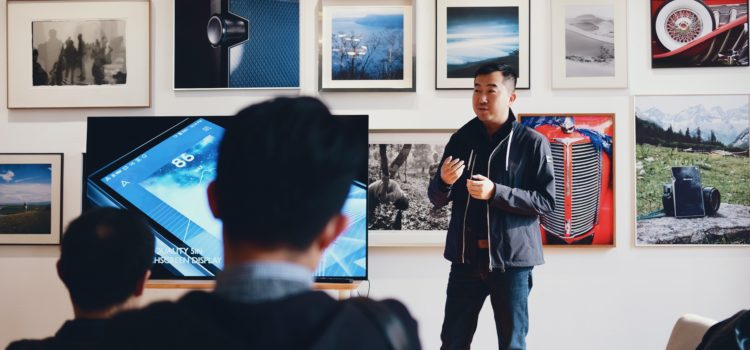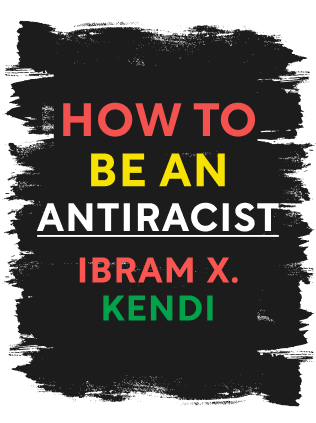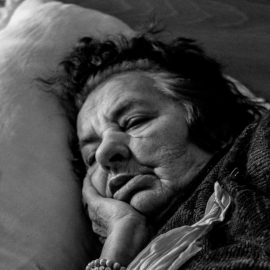

This article is an excerpt from the Shortform book guide to "How to Be an Antiracist" by tIbram X. Kendi. Shortform has the world's best summaries and analyses of books you should be reading.
Like this article? Sign up for a free trial here .
What is cultural racism? How does it use subcultures within a race to rationalize the superiority of one group over another?
Cultural racism is built on the combined identities of one’s race and culture. How to Be an Antiracist by Ibram X. Kendi discusses the discrimination against Black youth because their style is perceived to be “thuggish.”
Keep reading to understand cultural racism, how it started, and Ibram X. Kendi’s experiences with it.
Overview of Cultural Racism
Cultural racism is a combination of racist policies and ideas that causes and maintains racial inequities, the main idea being the belief that there is a standard culture that is superior and the cultures of other racialized groups are inferior.
Example #1: Enslaved Africans created the language of Creole in Haiti. Racist powers deem these languages mere “dialects” of the “standard” English that White people speak, and they attach negative connotations to these languages such as “broken” or “nonstandard.”
Example #2: Columnist Jason Riley condemned Black youth culture in New York because it “celebrated thuggery.” He thought that the baggy pants and loose shirts people wore glorified jail fashion. This belief suggests that certain ways of dressing are inherently superior to others.
In reality, there is no hierarchy of cultures. Cultures are different from each other, but none of them are superior or inferior.
History and Invention of Cultural Racism
Cultural racism started back in the Age of Enlightenment when Europeans decided their culture was the normal standard and everyone else’s was inferior or pathological.
Enslaved Africans created new cultures in most European countries, influenced by what surrounded them and informed by their existing cultures. African American culture was created by Ibram’s ancestors. They created the language of Ebonics by mixing ancestral languages with English, and they created African Christianity, which includes call-and-response, lively funerals, and Holy Ghost worship.
Culturally racist scholars see this culture creation as assimilation. They expect that if African Americans still had culture, they would use the same languages and traditions that the people in Africa do. However, outward displays of culture such as fashion or food are only one facet of culture. Culture is also based in internal values and philosophies.
The 1990s
Culture is always evolving, and in the 1990s, Ebonics, hip-hop, and dressing “fresh” (stylishly) were part of Black New York culture. This culture wasn’t always popular with parents and grandparents, who particularly disliked hip-hop because they thought its lyrics about thugs and sex, among other things, reinforced stereotypes and was a bad influence. Critics also thought that hip-hop reinforced stereotypes and that its content turned people into delinquents. If only the Black culture could become more “civilized,” one critic argued, racial inequities would cease to exist. But, as we know, cultures don’t produce inequities (policies do), and distinguishing between “civilized” and “uncivilized” cultures is a culturally racist activity—it implies that one culture is superior to another.
(Mainstream culture, however, appreciated Black culture enough to appropriate elements of it such as fashion, music, and language.)
Ibram’s Experiences in How to Be an Antiracist
Ibram loved African American culture, which he first experienced in church. Strangers called each other brother and sister, the congregation called back at preachers, choir members swayed to the music, and funerals were full of life.
The Ave
Ibram also experienced culture whenever he visited the Ave, the intersection of Jamaican Avenue and 164th Street. Ibram’s generation didn’t care if adults or White people didn’t like their clothes or language. They wore baggy jeans, bubble coats, Nike Air Force 1s, or dangling chains. It wasn’t just about what you wore, either, it was how you wore it—experimentation was part of the culture. Shoes were especially important. Ibram and his friends would take measures to make sure the fronts of the shoes didn’t crease, such as stuffing them at night or wearing them with a sock rolled up over their toes to pad out the front. It wasn’t comfortable, but it was fresh.
The Ave was also full of hip-hop. Cars and stores would play music, people walking by practiced out loud, and people rapped on corners. Ibram considered hip-hop to be oral poetry, short stories, and adventure fantasy.
Southern Culture
In 1997, Ibram and his family moved to a predominantly White neighborhood in Manassas, Virginia. The first night Ibram was there, he was worried the KKK would show up because he’d heard plenty about Black people being abused in the South.
When Ibram was fifteen, he believed in multiculturalism. He knew his own culture was legitimate. However, that didn’t stop him from looking down on the cultures of Southerners. He thought their music was terrible, they couldn’t dress, and their basketball players were “scrubs.” He was arrogant, and this kept potential friends at a distance. Furthermore, he thinks his cultural elitism probably cost him a spot on the junior-varsity basketball team.
Ibram didn’t have the whole picture. He knew that generally that cultural racism was wrong—he would never say Black people were culturally inferior. He would, however, judge specific Black cultures, and it took him two years to begin to respect the culture of North Virginia and make friends.

———End of Preview———
Like what you just read? Read the rest of the world's best book summary and analysis of Ibram X. Kendi's "How to Be an Antiracist" at Shortform .
Here's what you'll find in our full How to Be an Antiracist summary :
- What racism is and how it evolved
- How you might have subtle racist thoughts and not even be aware of them
- Why being "not racist" isn't good enough






